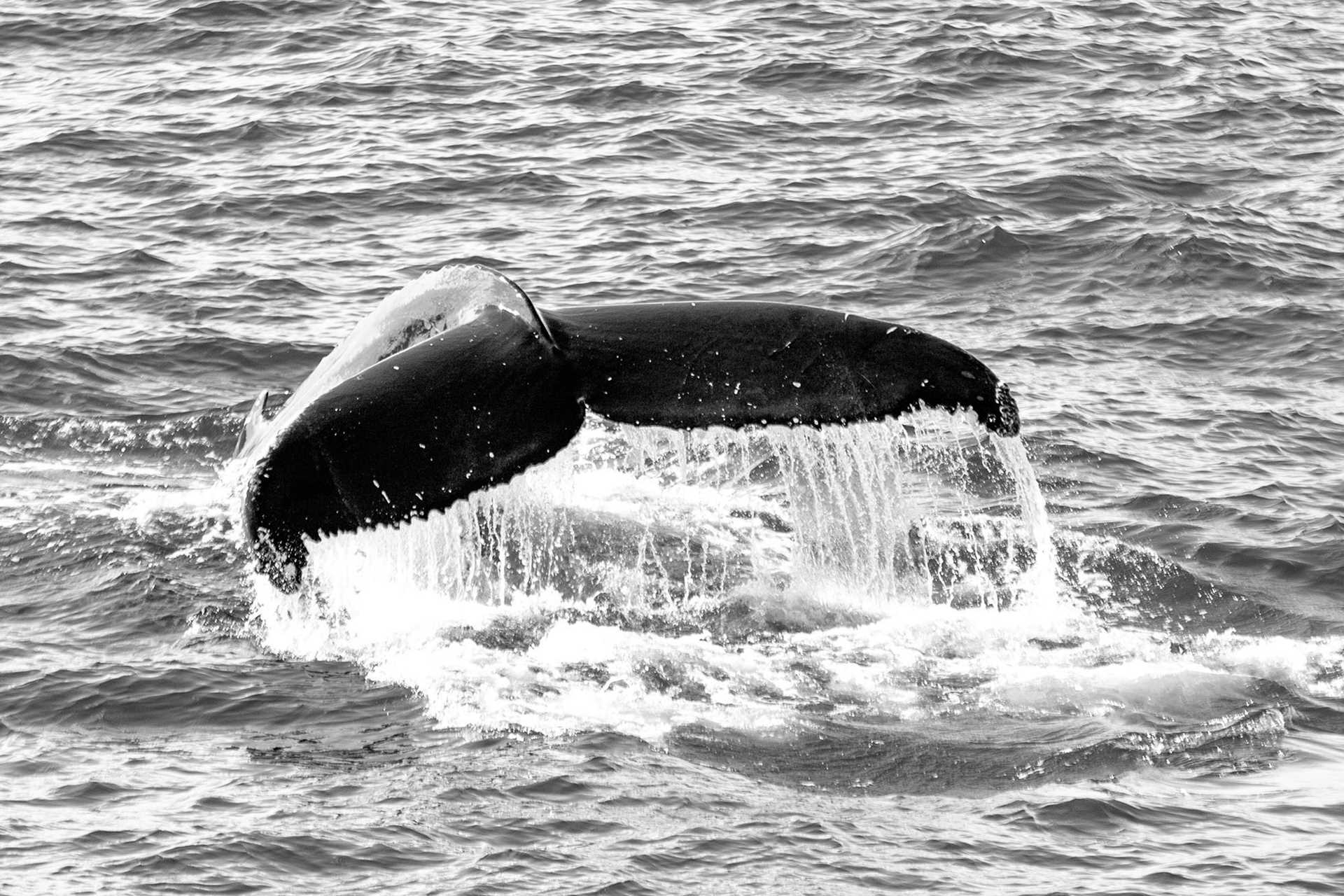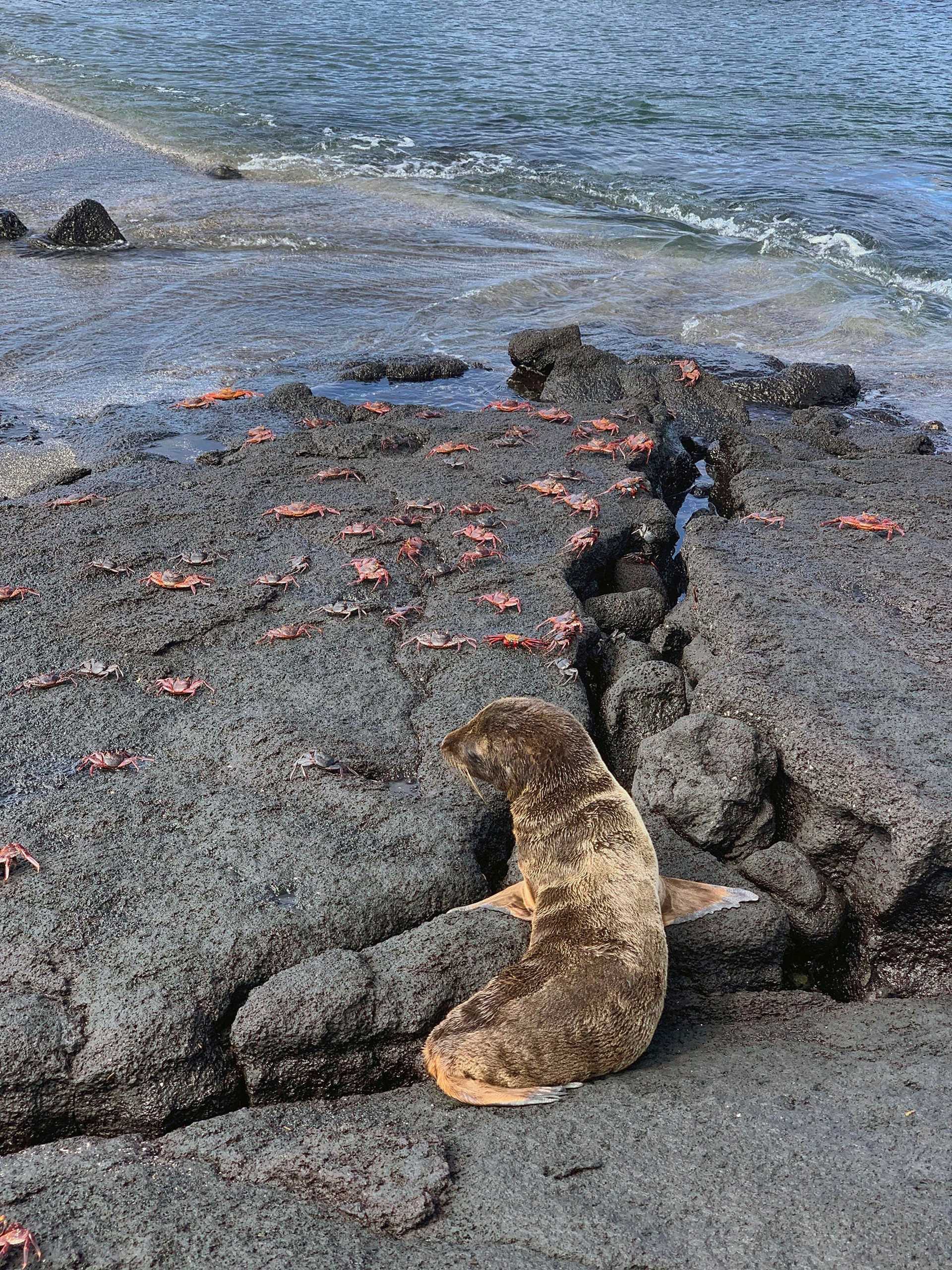Grimsey, Iceland
Legendary Northern Isles: Scotland, Faroes, & Iceland, July 8, 2022

With excellent maneuvering by the bridge team, we were able to get close to have amazing looks at some humpback whales. Some of them were feeding, and we were lucky enough to see tail flukes as they dove down to feed in the depths of the ocean. And then, the most amazing thing happened. Two humpback whales approached the bow and hung out with us for what felt like ages. They swam slowly from port to starboard and back again and seemed to play like a pair of puppies, rolling over on their backs and flipping up their pectoral fins. As the whale enthusiasts we all are, we followed them diligently, running from port to starboard and back again. It was absolutely incredible to witness these glorious creatures in their element, so relaxed and unconcerned about our presence. —Karen Velas, Naturalist (photo by Dave Katz)
Sitkoh Bay, Alaska
Exploring Alaska's Coastal Wilderness, July 11, 2022

National Geographic Quest from the shoreline of Sitkoh Bay. —Kelly M. Coursey Gray, Naturalist/Certified Photo Instructor
Amazon Natural Park, Peru
Upper Amazon Aboard the Delfin II, July 11, 2022

Yellow-billed jacamar in the rainforest on our walk this morning. —Mike Greenfelder, Naturalist/Certified Photo Instructor
Inian Islands, Alaska
Exploring Alaska's Coastal Wilderness, July 12, 2022

A Steller sea lion swallows some halibut. —Ben Shulman, Naturalist
San Cristobal Island, Galápagos
Wild Galápagos Escape, July 12, 2022

Blue-footed boobies are making hay while the ocean provides. The cold season and productive waters equal opportunity to lay eggs and raise chicks with an excellent chance of successfully raising them to independence. —Cindy Manning, Expedition Leader (photo by Patricio Maldonado)
Westman Islands, Iceland
Legendary Northern Isles: Scotland, Faroes, & Iceland, July 12, 2022

On the slopes of Eldfell, a redshank feeds on the flies that are attracted to the flower of the cow parsley plant. —Conor Ryan, Naturalist
Petersburg, Alaska
Exploring Alaska's Coastal Wilderness, July 15, 2022

A Sitka black-tailed deer pauses from foraging in the muskeg. —Doug Gualtieri, Naturalist
Ísafjörður, Iceland
A Circumnavigation of Iceland, July 18, 2022

A classic humpback whale sight: large flukes with a waterfall of seawater spilling off them as the whale prepares to dive deep in search of krill. —Conor Ryan, Naturalist
Yarapa River, Peru
Upper Amazon Aboard the Delfin II, July 16, 2022

Black-tailed trogons are a unique and large trogon with a very distinctive red belly, stout yellow bill, and a white band that separates their chest from their red belly. The male is different from the female. While males have an emerald green coloration on their feathers, females have a gray coloration from the head down to the back. —Cristian Moreno, Undersea Specialist
Fernandina Island, Galápagos
Galápagos Aboard National Geographic Endeavour II, July 18, 2022

This baby sea lion is entertaining itself. It is common to see sea lions playing with other babies or even other creatures. What a fun learning experience. —Walter Perez, Naturalist/Certified Photo Instructor
Húsavík, Iceland
A Circumnavigation of Iceland, July 18, 2022

Our undersea team explored the incredibly unique underwater hydrothermal vents within Eyjafjӧrður Fjord. Freshwater that has seeped down into the volcanic Earth makes contact with hydrothermal fluid at the bottom of the fjord. As the superheated mixture of fresh, hydrothermal fluid is forced through benthic fissures, a chemical reaction occurs as it meets the frigid saltwater in the fjord. A precipitate is formed from this reaction, creating large, white extrusions built up of various minerals seeping out of the fluid to build all kinds of vents and even hydrothermal chimneys underwater! These vents attract all kinds of Iceland’s notorious and most flamboyant fish. —Caitlyn Webster, Undersea Specialist
Fernandina Island, Galápagos
Wild Galápagos Escape, July 19, 2022

As we returned to the stretching class up on the sky deck, a family of orcas surprised us as they looked for something to eat in the area. —Ixora Berdonces, Naturalist





